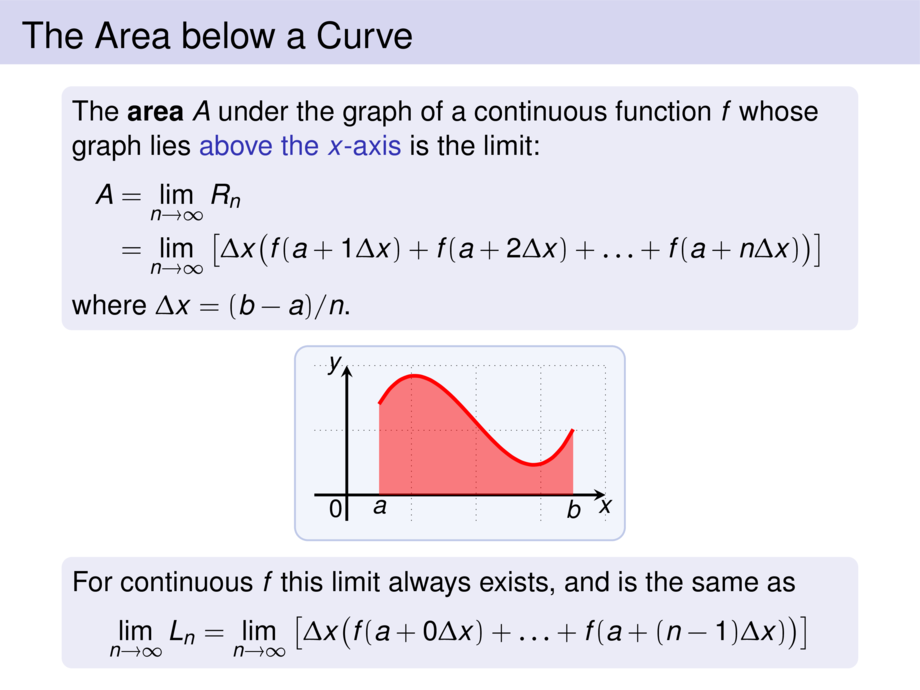
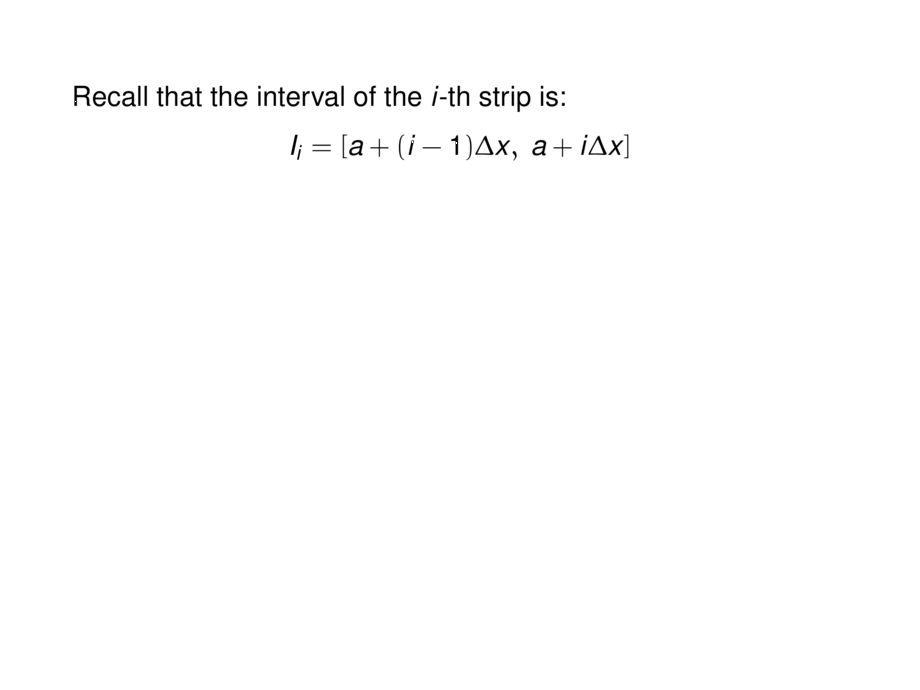
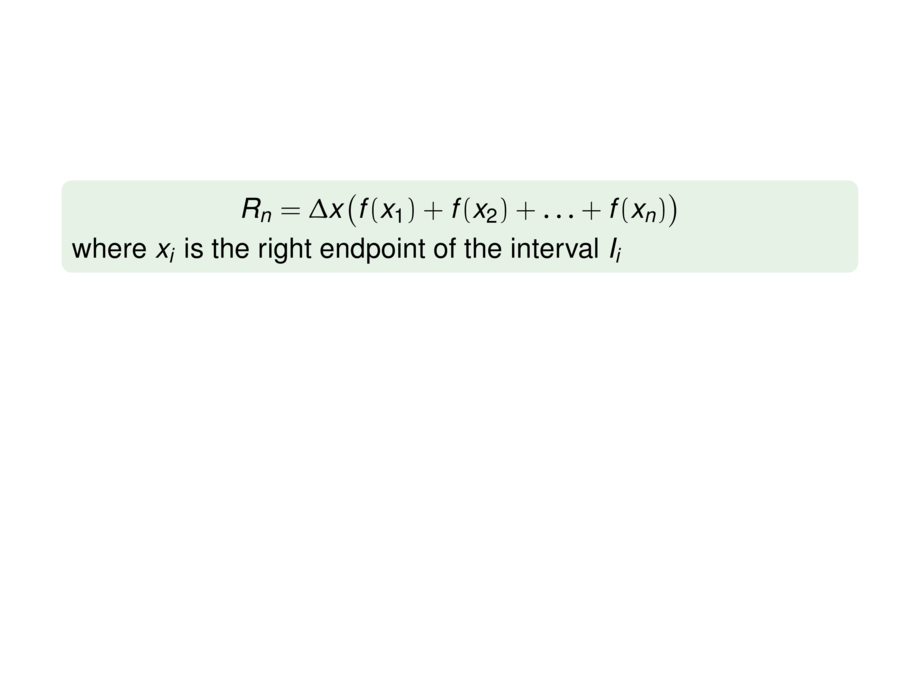
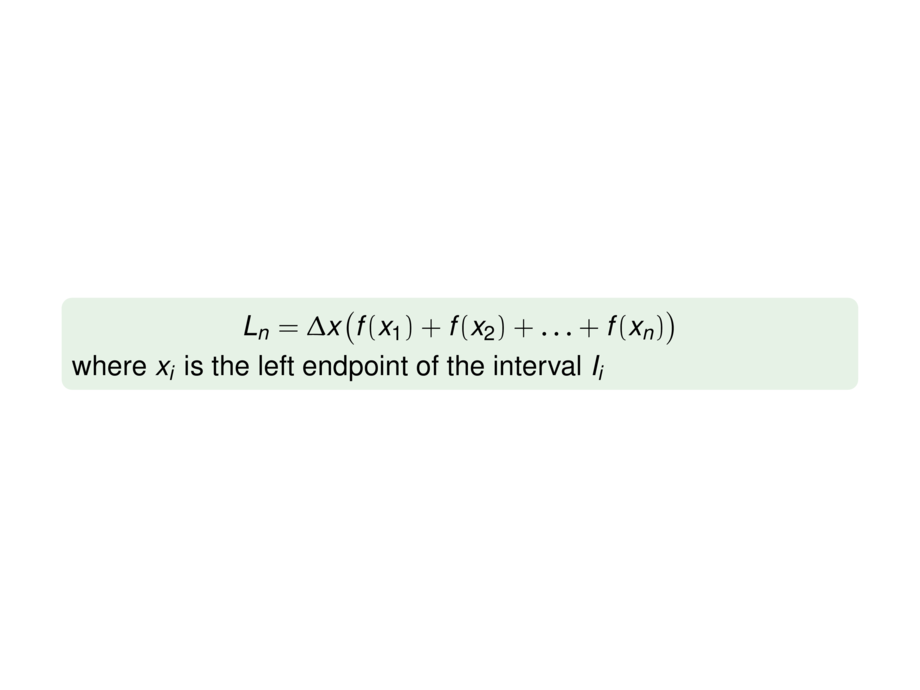
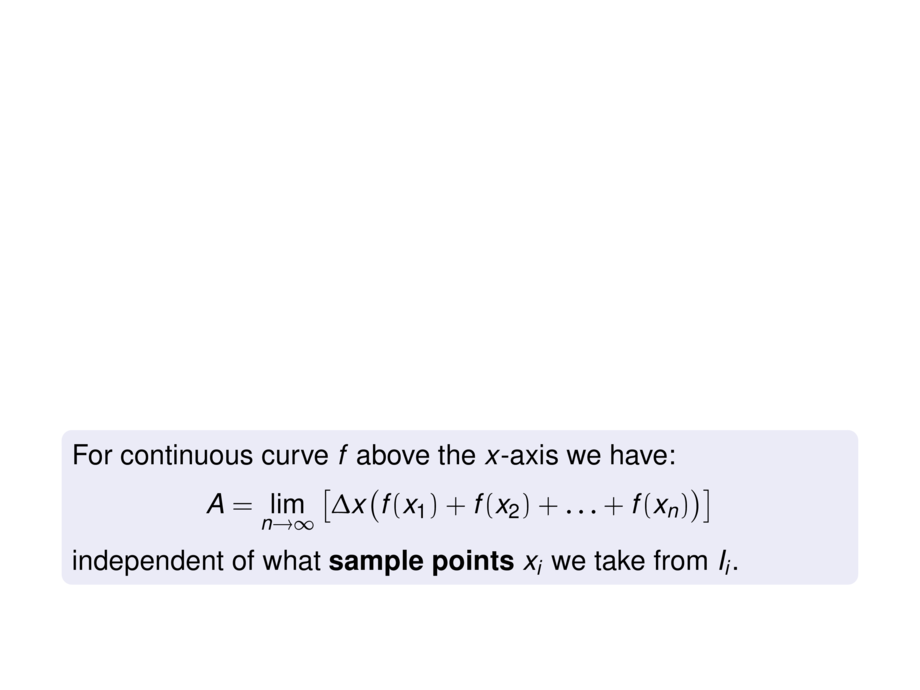
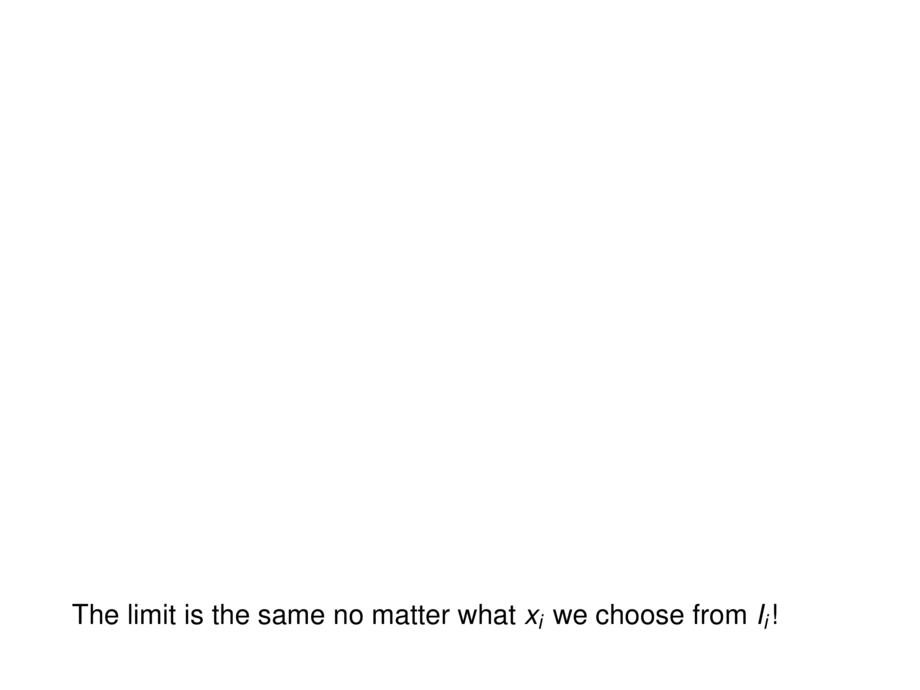






























































































80/98
\begin{frame}
\frametitle{The Area below a Curve}
Recall that the interval of the $i$-th strip is:
\begin{talign}
I_i = [a + (i-1)\Delta x,\;a+i\Delta x]
\end{talign}\vspace{-3ex}
\pause
\begin{exampleblock}{}\vspace{-.75ex}
\begin{malign}
R_n = \Delta x\big(f(x_1) + f(x_2) + \ldots + f(x_n)\big)
\end{malign}\vspace{-1ex}
where $x_i$ is the right endpoint of the interval $I_i$
\end{exampleblock}
\pause
\begin{exampleblock}{}\vspace{-.75ex}
\begin{malign}
L_n = \Delta x\big(f(x_1) + f(x_2) + \ldots + f(x_n)\big)
\end{malign}\vspace{-1ex}
where $x_i$ is the left endpoint of the interval $I_i$
\end{exampleblock}
\pause\medskip
\begin{block}{}
For continuous curve $f$ above the $x$-axis we have:
\begin{talign}
A = \lim_{n\to \infty} \left[ \Delta x\big(f(x_1) + f(x_2) + \ldots + f(x_n)\big) \right]
\end{talign}
independent of what \emph{sample points} $x_i$ we take from $I_i$.
\end{block}
\pause
The limit is the same no matter what $x_i$ we choose from $I_i$!
\pause\medskip
A famous choice of sample points are upper and lower sums\ldots
\end{frame}

